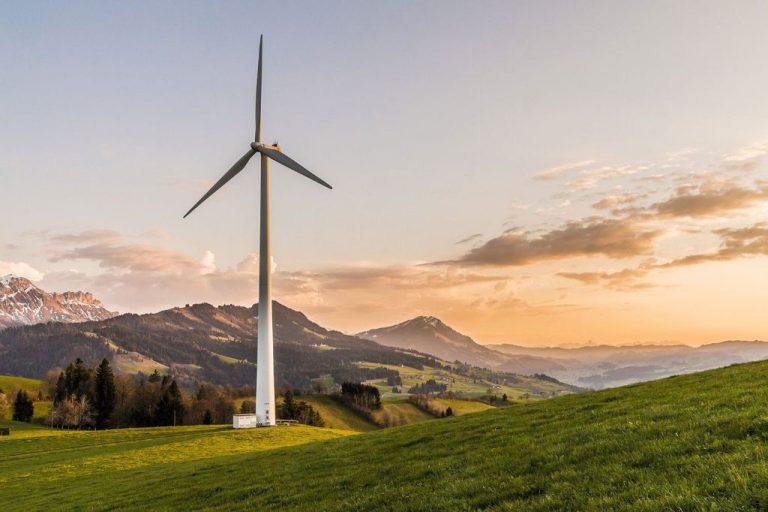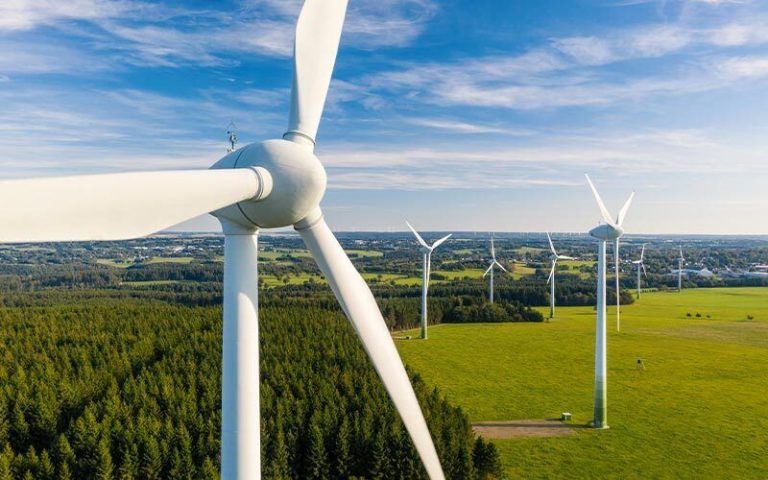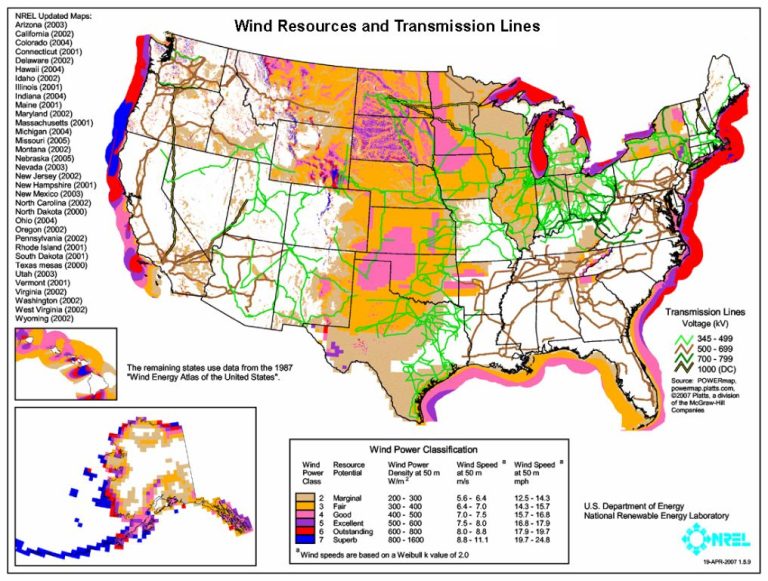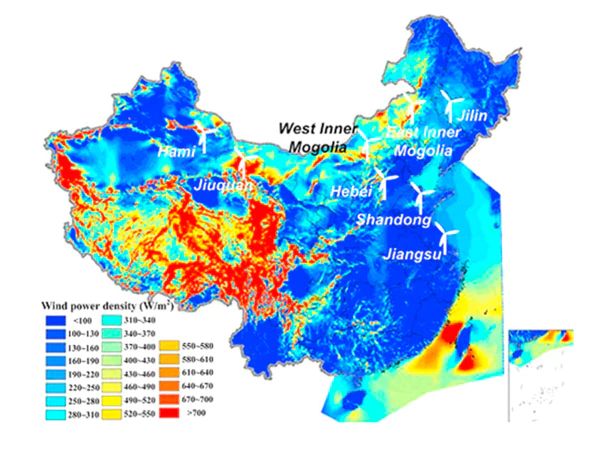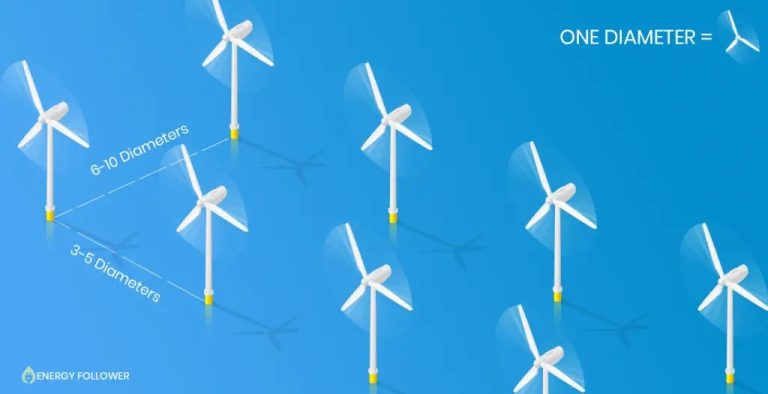What Is The Relationship Between Wind Speed And Power Output?
Wind energy is one of the fastest-growing renewable energy sources in the world. As of 2022, wind power accounts for over 8% of electricity generation globally. With many countries aiming to increase renewable energy production and reduce carbon emissions, wind energy is expected to continue its rapid growth in the coming decades.
A key factor determining wind power output is wind speed. The kinetic energy in wind is converted into mechanical power by wind turbine blades, which drives an electrical generator. There is a cubic relationship between wind speed and power output – if the wind speed doubles, the power output increases by a factor of 8. Understanding this relationship is important for optimizing wind farm siting and operations.
This article provides a comprehensive overview of the connection between wind speed and power output. It explains the physics behind wind energy, the optimal wind speed range, power curves, and other factors that impact power generation. Challenges associated with high wind speeds are also discussed. The goal is to provide readers with an in-depth understanding of how wind speed impacts wind turbine performance and electricity production.
Wind Energy Basics
Wind turbines convert the kinetic energy in wind into mechanical power to generate electricity. The wind turns the blades of the turbine, which spin a shaft connected to a generator to produce electricity.
The key components of a wind turbine include:
- Blades – The blades capture the wind energy and convert it into rotational motion. Most modern wind turbines have three blades.
- Rotor – The blades and hub together form the rotor. The rotor connects to the main shaft.
- Gearbox – Gears connect the low-speed shaft to the high-speed shaft and increase the rotational speed to the level required for the generator.
- Generator – The generator uses electromagnetic induction to convert the mechanical power into electrical power.
- Tower – The tall tower supports the rotor and generator and raises them up to greater wind speeds at higher altitudes.
- Controller – The controller monitors direction and wind speed and controls the yaw so the rotor faces into the wind.
The wind turns the rotor, which spins a shaft connected to the gearbox and generator to produce electricity. The power output is influenced by the wind speed, as discussed next.
Wind Speed and Power
The amount of power generated by a wind turbine is highly dependent on wind speed. This is because the kinetic energy available in wind is proportional to the cube of its velocity. Doubling the wind speed increases the available power by a factor of eight (2^3=8). This means that small differences in wind speed can make large differences in energy production.
According to research, there is a cubic relationship between power potential and wind speed. The faster the wind blows, the more kinetic energy it contains that can be converted into rotational energy by the turbine blades. This is why forecasting wind speed accuracy is essential for harnessing wind power efficiently.
Optimal Wind Speed Range
Wind turbines operate most efficiently within a certain range of wind speeds. There are three key wind speeds that determine this optimal range:
The cut-in speed is the minimum wind speed, usually between 3-4 m/s (6-9 mph), at which the turbine blades begin to spin and generate power. Below this speed, there is insufficient wind energy to overcome friction and resistance in the turbine. As wind speed increases above the cut-in speed, the power output ramps up rapidly.[1]
The rated wind speed, typically around 12-15 m/s (25-35 mph), is the minimum speed where the turbine reaches its maximum or rated power output. Most commercial wind turbines are designed to achieve their rated power output at this wind speed.[2]
The cut-out speed is the maximum wind speed, usually 20-25 m/s (45-55 mph), above which the turbine shuts down to prevent damage from extremely high winds. Operation beyond this speed could over-stress components.[3]
Therefore, the ideal wind speed range for power generation is between the cut-in and cut-out speeds, with maximum output achieved around the rated wind speed.
Power Curve
A wind turbine’s power curve is a graph that indicates how much power the wind turbine can produce at different wind speeds. As wind speed increases, the power output also increases, until the turbine reaches its rated power at its rated wind speed. After this point, the power output remains constant at the rated power, even as wind speed continues to rise. This is because the turbine has physical constraints that limit maximum power.
The exact shape of the power curve depends on the specific wind turbine design. Key factors that affect the power curve include:
- Rotor size – Larger rotors can harness more wind energy.
- Generator size – Maximum power is limited by generator capacity.
- Cut-in speed – Minimum wind speed to start spinning.
- Rated wind speed – Speed where turbine reaches maximum power.
- Cut-out speed – Speed where turbine stops for safety.
Understanding a turbine’s power curve is important for estimating total energy production at different wind sites. The curve visually indicates how output changes across operating wind speeds.
Other Factors Affecting Power
While wind speed is the primary determinant of power output, there are other important factors that also affect how much power a wind turbine can generate. According to research from Windurance and IEEE, some of the main additional factors include:
- Air density – Denser air can generate more power at the same wind speed. Air density decreases at higher altitudes.
- Rotor swept area – Larger rotor blades cover a bigger swept area and harness more wind.
- Blade design – Factors like blade pitch, shape, and material impact efficiency.
- Wind direction – Turbines must be oriented into the wind. Yaw drives continuously reposition the nacelle.
- Temperature – Colder temperatures increase air density and power potential.
- Tower height – Higher towers access faster wind speeds not slowed by ground friction.
Optimizing these factors, in addition to choosing windy sites, allows wind farm developers to maximize power generation. Understanding how they impact turbine performance helps engineers improve designs as well.
Challenges of High Wind Speeds
While high wind speeds can increase a wind turbine’s power output, they also pose some significant challenges. At very high wind speeds, the structural integrity of the turbine can be threatened. The rotational forces exerted on the blades increase dramatically with wind speed. This puts greater strain on the blades, hub, and tower, increasing the risk of fatigue damage or even catastrophic failure if winds exceed the turbine’s design limits (Kahrobaee and Asgarpoor, 2013).
High wind speeds also generate more noise as the blades slice through the air at a faster rate. The tips of turbine blades can reach speeds over 200 mph in strong winds. This aerodynamic noise can create issues with community acceptance if wind farms are sited near residential areas (Leloudas et al., 2007).
Additionally, most turbines employ braking mechanisms to stop the rotor from turning at very high wind speeds. These braking systems place extra wear and tear on turbine components. Frequent braking can lead to higher maintenance costs over the turbine’s lifetime (Burton et al., 2011).
Careful siting is critical to minimize the risks associated with very high winds. Areas with frequent extreme wind events may not be suitable for wind power generation without proper turbine design specifications. Advancements in blade materials, control systems, and forecasting tools continue to expand the operable wind speed range for modern turbines (Veronesi et al., 2021).
Forecasting Wind Speed
Accurate forecasts of wind speed are critical for effective operations and management of wind power plants. Wind power production is highly dependent on wind speed, so being able to reliably predict wind speeds into the future enables optimal scheduling and dispatch of wind energy generation. Forecasting on different timescales, from minutes to days ahead, provides essential information for activities like bidding on electricity markets, scheduling maintenance, and preparing for extreme weather events. More accurate wind speed forecasts lead to reduced operating costs and improved integration of wind power into energy systems.
There are a variety of techniques used for wind speed forecasting, from physical models to statistical and machine learning approaches. Numerical weather prediction (NWP) uses meteorological modeling to forecast weather conditions and wind speed based on current measurements and scientific understanding of atmospheric dynamics. Machine learning techniques like artificial neural networks (ANNs) and support vector machines (SVMs) can be trained on historical weather data to identify patterns and relationships for prediction. Hybrid approaches combine NWP with statistical techniques to calibrate the model forecasts. New deep learning methods, especially recurrent neural networks like long short-term memory (LSTM), show promise for capturing nonlinear spatiotemporal dependencies in wind speed data.
Guo et al. [1] proposed a hybrid wind speed forecasting method based on a backpropagation neural network and seasonal exponential adjustment. Dhiman et al. [2] provided a review of deep neural networks for wind power forecasting, citing improved performance over traditional machine learning techniques. Alhussan et al. [3] developed an optimized bidirectional LSTM model using dipper throated and genetic optimization algorithms.
Implications for Wind Farm Siting
The average wind speed at a potential site is one of the most important factors to consider when selecting locations for wind farms. Higher average wind speeds allow turbines to generate more electricity, so sites with consistently strong winds are ideal. According to Energy5, wind speeds of 12-20 mph are generally considered economically viable for utility-scale wind projects. Areas that experience average annual wind speeds of less than 12 mph are usually not suitable for wind farm development.
In addition to wind speeds, there are other geographic considerations for siting wind farms. The topography and elevation of the land can impact wind flow. Ridgelines, open plains, gaps between mountains, and shorelines often make good sites by funneling winds and providing access to strong and steady breezes. The area should also have sufficient available land and landowners receptive to leasing property for wind turbines. Proximity to existing transmission infrastructure is advantageous to enable connection to the grid and distribution of the power generated. Environmental factors like wildlife patterns, wetlands, and sensitive habitats may also dictate where turbines can be constructed. According to Energy5, wind farm developers must balance renewable energy goals with economic viability and environmental concerns when evaluating potential locations.
Understanding the wind resource is critical for selecting sites to maximize power generation. Comprehensive wind studies and meteorological testing provide detailed data to inform siting decisions. With careful analysis of wind patterns, geography, transmission access, land use constraints, and other variables, developers can identify optimal placements for productive and efficient wind farms.
Conclusion
In summary, there is a strong relationship between wind speed and power output for wind turbines. As wind speed increases, the power output increases exponentially, until the turbine reaches its rated power at the optimal wind speed range. At very high wind speeds beyond the turbine’s limits, power output drops dramatically as a protective measure. The specifics of this wind speed-power curve are dependent on the turbine design, but the overarching relationship remains. Understanding this relationship has important implications for forecasting power production and siting wind farms in areas with the most favorable wind speed distributions.
This wind speed-power connection underscores why wind speed is such a crucial factor for wind energy generation. With the right conditions, wind power can be highly productive and valuable. But without proper site selection and turbine engineering optimized for the local climate, projects may underperform if wind speeds are not high enough. As the world continues rapidly building out wind power to meet sustainability goals, properly accounting for this fundamental relationship will be key.

